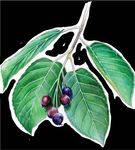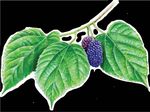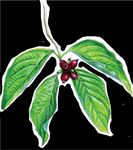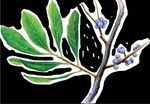Creating a Garden for Birds
←
→
Page content transcription
If your browser does not render page correctly, please read the page content below
Creating a
Garden
for Birds
White-breasted Nuthatch and suburban garden
Few things are as interesting and beautiful as songbirds. They brighten up the darkest days of winter, adding
music and color to our lives. What can we do to repay them? For starters, we can make our yards more bird-
friendly. Never before has suitable habitat for birds been in such short supply. Urban areas are expanding
constantly, altering or destroying natural areas. By creating bird gardens, we provide oases for birds in the
heart of our cities. Not only the birds benefit. If you make your yard more attractive to birds, you’ll have the
pleasure of seeing an increasing number and variety of birds there.The first step in designing a bird gar- Plan Ahead
den is to evaluate your yard from a
bird’s perspective. Does it provide
the basic necessities—food, water,
W hen you’re designing your
yard, consider how large each
plant will be when it matures. Re-
shelter—that birds need to survive?
member that a lovely little tree that
If not, which are lacking? If there’s
you plant today may become a giant
a shortage of food, you can hang
behemoth that hogs your entire yard
up bird feeders, but also consider
in a few years.
planting some fruit-bearing trees or
shrubs. Plants that hold their fruits Before you start digging up plants and
through the winter provide a vital rearranging your yard, you’ll want to
food source for nonmigratory birds. try out your garden design on paper.
Add variety to the kinds of food you Draw a map of your property, show-
offer, and you’ll attract a wider vari- ing the location of your house and
ety of bird species. all the trees and other major plants.
With a little effort, Serviceberry
you can easily turn your
yard into a welcome
haven for songbirds.
A good water source will draw birds Then place a sheet of thin tracing pa-
like a magnet. Even just a common per over the map and draw your rede-
birdbath purchased at a garden sup- signed garden, indicating where each
ply shop will do. Some people hang new plant will go.
a plastic bottle or jug of water with a Avoid straight lines or rows in your
hole in the bottom over their birdbath. plantings. Create a meandering line
The motion and sound of the dripping where two kinds of habitat, such as
water is irresistible to many birds. Dogwood
shrubs and lawn, meet. These edge
Does your yard have an area of dense areas provide the widest variety of
thickets that birds could use for nest- perching places, nest sites, and food
ing, secluded perching, or escape types. Develop secluded areas of
cover? If not, then plant some shrubs shrubs, conifers, and mixed plant-
or make a hedge. Consider growing ings. Take note of the areas in your
some vines up the side of your house yard that receive sun or shade, and
or along your fence. Try to create choose only plants that are appropri-
lush, wild growth in a few places to ate for each lighting situation. Leave
simulate a natural environment. You dead limbs and even entire dead
might attract cavity-nesting birds by trees where they are (unless they’re
putting up a nest box (see BirdNotes: dangerous to people or property).
Selecting a Nest Box). The insects tunneling under the
bark are an important food source
You should be able to find some ex-
for birds such as chickadees, wood-
cellent plants for your garden in a
peckers, and nuthatches.
nursery—either local or mail order.
Do check to make sure that the plants Furthermore, old hollow trees are be-
you select are hardy and native to coming increasingly scarce, and are
your region. often taken by nonnative species such Wild Grape
2Bird-friendly Plants
Check with your nursery to make sure that the plant species you select are native to your area.
Deciduous Trees Coniferous Trees ers in spring, followed by red, yellow, blue,
or black berries. Birds eat the berries and
Mulberries (Morus species) The berries Red Cedar (Juniperus virginiana) An at- find cover in the branches.
produced by these trees in July and August tractive cone-shaped tree, offering cover,
are a favorite food of more than 40 bird nest sites, and winter fruit for birds. Usually Virginia Creeper (Parthenocissus quinque-
species. These wide-spreading, medium- grows 50 to 90 feet tall. folia) A tree-climbing vine that produces
sized trees grow 30 to 60 feet tall. small blue berries from August to February.
Spruces (Picea species) The cones of these
Dogwoods (Cornus florida and other spe- trees produce seeds that birds eat in fall Wild Grapes (Vitis species) These climbing
cies) An excellent choice for birds and and winter. Spruces also provide cover and vines provide superb fruit, eaten by more
people, this well-known ornamental tree is nest sites. They may grow up to 150 feet than 50 bird species. The vines also provide
covered with white, pink, or red flowers in tall. excellent cover and nest sites.
spring and red fruits (birds love them) from
August to November. Grows up to 40 feet Shrubs and Vines Herbaceous Plants
tall.
Staghorn Sumac (Rhus typhina) This shrub An herbaceous plant has flowers as well
Crab Apples (Malus species) Many bird spe- has brilliant red fall foliage and clusters of as soft, green stems instead of woody
cies eat the flower buds, flowers, fruit, and hairy red fruit that persist throughout winter branches. They can be annual, biennial, or
seeds of these trees, which also provide and are eaten by many bird species. perennial. The best herbaceous plants for
good cover and nest sites. Usually grows to birds produce edible seeds. For example,
about 20 feet tall. Northern Bayberry (Myrica pensylvanica) it’s hard to go wrong with sunflowers which
This semi-evergreen shrub grows berries produce large seeds with lots of fat content
Serviceberries (Amelanchier species)These which stay on the plant year-round and are and most birds love them. If you are hop-
are medium-sized trees, 25 to 60 feet tall, a preferred food of Tree Swallows, catbirds, ing to attract hummingbirds, go for color-
that grow masses of white or pinkish flow- bluebirds, and many other birds. ful, tubular flowers, such as salvia, foxglove,
ers in spring. Fruits appear in the summer. morning glory or bee balm. You’ll probably
Viburnums (Viburnum species) A large ge- attract some butterflies, too!
nus of easy-to-grow shrubs with white flow-
Mulberry 1
5 4
6
3
2
Plants shown on front cover
1. Virginia Creeper 4. Spruce
2. Crab Apple 5. Red Cedar
Northern Bayberry 3. Staghorn Sumac 6. Viburnum
3as European Starlings and House branches about two feet deep, then The illustrations in this issue of BirdNotes
Sparrows. Native cavity-nesters, such add a few feet of thinner branches on were created by Reyn Ojiri, a Bartels Sci-
ence Illustration Intern. Please visit
as bluebirds and woodpeckers, are top. Over that, add some thin conifer
www.reynojiri.com to see more of Reyn’s
having an increasingly difficult time branches. work.
finding nest sites. A dead tree can
With a little time and effort, you can
look attractive in a garden, particu-
easily turn your yard into a welcome
larly if it has ivy growing up its trunk.
haven for local and migrant song-
Use dead branches that fall from your birds.
trees to start a brush pile. It will af-
ford protection to the birds from
harsh weather and predators. To start
your brush pile, lay down some thick
American Goldfinch
on lemon queen
sunflowers.
The Cornell Lab of Ornithology uses the best science and technology to discover more about birds and biodiversity.
Contributions from members help support research, education, and citizen-science proj-ects. As a member you’ll receive a
subscription to our award-winning magazine, Living Bird, and more. Visit www.birds.cornell.edu/membership or call (866) 989-2473
to join.
© 2012 Cornell Laboratory of Ornithology, 159 Sapsucker Woods Road, Ithaca, NY, 14850 • 607-254-2473 •
www.birds.cornell.edu
4You can also read

























































